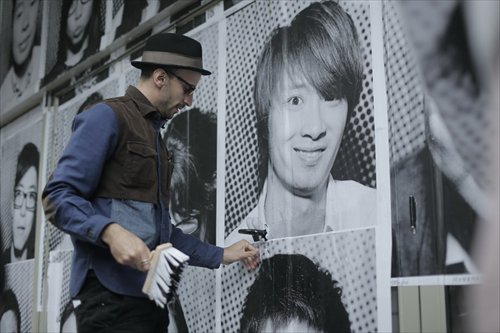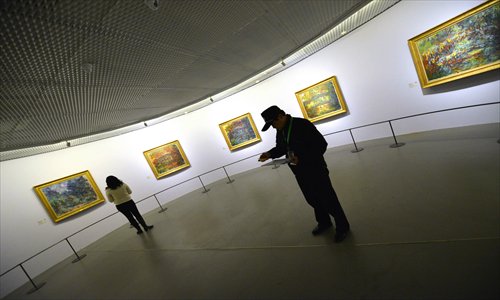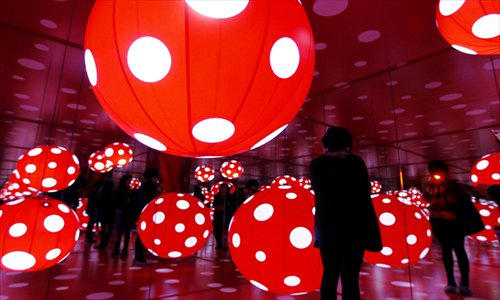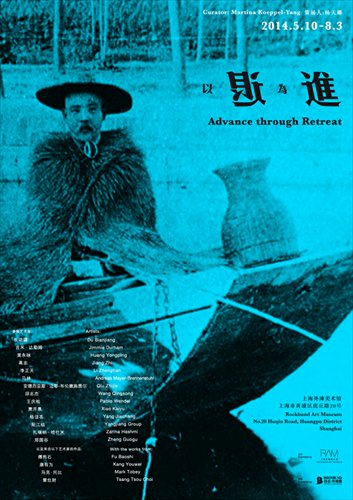Art space
A wrap-up of Shanghai’s creative scene in 2014
If a city embraces impressionist Claude Monet, psychedelic Yayoi Kusama, expressional minimalist Sean Scully, Chinese celebrated gunpowder artist Cai Guoqiang, new media art pioneer Jeffrey Shaw, and several inclusive group exhibitions that encompass hundreds of artworks gathered from around the world, all in one year, it would be safe to say the art scene there is truly vigorous and diverse.
Shows have ranged from the first exhibition on the Chinese mainland of Claude Monet, at K11 Art Mall, to French street artist JR's Inside Out project (pictured below) that swept the city's landmarks, including Xintiandi, Huaihai Road Middle, the Power Station of Art, and Magda Danysz Gallery Shanghai.

According to art.china.cn, more than 3,500 people went to the Monet's exhibition (pictured below) on its first day, and the exhibition drew some 300,000 spectators from March to June.

Private spaces
With the great success of the Monet exhibition, the art space in Shanghai K11 Art Mall demonstrated that it has become a key player in the Shanghai art scene since it opened in May 2013. It was one of many private art galleries and museums that held the majority of last year's most arresting exhibitions.
Rockbund Art Museum presented a remarkable and thought-provoking exhibition, Advance through Retreat, which showcased works by artists that engage in a dialogue with cultural and artistic traditions. In March, BANK featured pieces by acclaimed overseas Chinese artists that focused on place and personal identity in the group exhibition Topophilia.
MoCA Shanghai introduced world-renowned Japanese artist Yayoi Kusama's first solo exhibition (pictured below) on the Chinese mainland.

It lasted for three and a half months, closing on March 30. Chronus Art Center at 50 Moganshan Road spent more than six months showcasing works by Australian new media artist Jeffrey Shaw, who collaborated with different groups of artists to experiment on his Advanced Visualization and Interaction Environment (AVIE) system.
In Pudong New Area, Himalayas Museum became the first stop in China in September for the world-touring exhibition The Trilogy of the Moderns by French photographer Gérard Rancinan. It then hosted a solo exhibition for twice Turner Prize nominee, the abstract artist Sean Scully. It held another for Chinese contemporary artist and traditional culture enthusiast Hu Xiangcheng.
Government-owned museums and galleries also presented some impressive exhibitions. The Power Station of Art held the 10th Shanghai Biennale, the solo exhibition of Cai Guoqiang and a group exhibition of hundreds of tapestries from Europe, Asia and Africa; while China Art Museum put on nearly 40 exhibitions, including solo exhibitions by Chinese artist Pan Lusheng and German artist Kathe Kollwitz, as well as exhibitions looking at the art histories of France, Germany, Italy and Hungary.
Expanding ground
Besides those familiar venues, last year also saw a surge in new art spaces in the city. Long Museum West Bund opened in March, Yuz Museum opened in May and the Shanghai 21st Century Minsheng Art Museum opened in November. The first venue has an exhibition space of 16,000 square meters and the latter two each has around 9,000 square meters.
Such large exhibition areas pose challenges to curators. All three venues opted for expansive group exhibitions for their openings. While these demonstrated their ambition and agendas, to some extent they felt more like art fairs than coherent exhibitions, failing to make connections between their many exhibits.
Another important new player joining the local art market was the art fair Photo Shanghai, which was held at Shanghai Exhibition Center in September. The fair's director, Alexander Montague-Sparey, said Shanghai is an Asian hub for photography, although there were reports that it fell short in terms of trade volume.
The art scenes in Shanghai's suburbs also progressed. Zendai Zhujiajiao Art Space in Qingpu district cultivated a number of good-quality art residency projects that not only drew urban dwellers but also elevated the artistic atmosphere in the traditional Chinese water town.

A poster for the exhibition Advance through Retreat at Rockbund Art Museum Photos: Yang Hui/GT, CFP and courtesy of the museums
In Jinshan district, Chinese experimental artist Li Shan, together with curator Ma Lin, launched a 16-month experimental art project promoting local emerging artists.
The increased diversity of art exhibitions in the city is good for the art scene. However, Wang Nanming, an independent art critic and curator, warned that curators need to guard against becoming merely the assistants of exhibited artists and the lackeys of gallery owners.